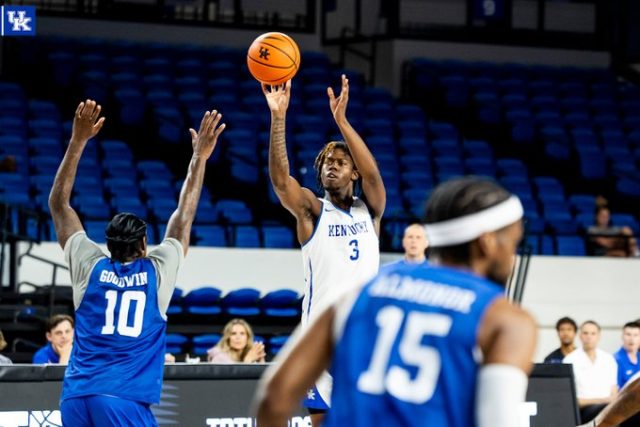McDonald’s struggles to fix its massive methane problem
Published 12:00 am Wednesday, December 8, 2021
With an empire of 39,000 restaurants in 119 countries, McDonald’s Corp. serves more beef than any other restaurant chain on the planet. Selling hundreds of hamburgers every second has entrenched the fast-food giant as an outsized contributor to climate change.
Cattle belch out large quantities of heat-trapping methane, making beef the most harmful food for the climate, scientists say. Beef is responsible for about a third of McDonald’s climate footprint and – at more than 53 million metric tons of carbon per year – the fast-food giant produces more emissions than Norway.
Trending
For the past decade, McDonald’s has vowed to address the planet-warming problem behind its most popular menu item. In 2011, it helped launch the Global Roundtable for Sustainable Beef, an industry-backed group aimed at improving a variety of cattle-raising practices. The company promised next to purchase some of its beef from sustainable sources, and it followed that move with a 2018 pledge to trim the climate intensity of its food and packaging by 31% by 2030.
It went a step further in October, announcing it would zero out its entire climate footprint by 2050.
“When you eat one of our world-famous burgers, you’re joining a movement toward a more sustainable future,” McDonald’s said in one of its progress reports.
But an examination of the company’s headway shows that the world’s biggest hamburger chain so far hasn’t reduced the climate impact of its beef.
“There does not seem to be any proactive involvement or serious investment by McDonald’s to support its suppliers or make significant changes in its beef supply chain,” said Nic Lees, a senior lecturer in agribusiness management at Lincoln University in Christchurch, New Zealand, who studies beef sustainability programs.
The pledges cast a spotlight on the enormous challenge facing fast-food companies with brands built around a menu item that is harmful to the climate. McDonald’s doesn’t disclose how much beef it sells, but company officials have said in investor presentations that beef is its “largest menu category and growing” and that burgers are key to expanding its sales.
Trending
Overall emissions at McDonald’s have gone up by 7% since 2015, but the company said it has reduced the emissions intensity of its food and packaging – measured by the amount of greenhouse gases per ton of product – by nearly 6% in that time.
McDonald’s executives said the company has made substantial efforts to clean up its climate impacts and that beef’s complicated supply chain will require collaboration across different companies and industries.
“For more than a decade, McDonald’s and our supplier partners have invested in curbing deforestation, advancing science and establishing industrywide sustainability programs,” a spokeswoman said.
The lynchpin of the fast-food giant’s efforts has been a 5-year-old pledge to procure an unspecified quantity of sustainable beef in its 10 biggest markets, a goal McDonald’s recently claimed to have fulfilled. But, in some cases, the company has purchased beef through sustainability programs that don’t actually require cattle ranchers to adopt climate-friendlier practices.
In Canada, for instance, McDonald’s said 30% of the beef in its Quarter Pounder burgers there are now coming from “certified sustainable sources,” as verified by a program run by the Canadian Roundtable for Sustainable Beef, an organization that McDonald’s helped create. The Canadian program’s 60-page sustainability standard doesn’t require cattle ranchers to adopt any lower-emission practices. Instead, cattle ranchers only need to show that they are “aware of management practices that support carbon sequestration and minimize emissions.”
“It’s a low bar to being called sustainable,” said Darren Vanstone, who helped work on some of the Canadian program’s criteria in his former role as a manager for the nonprofit World Animal Protection.
Canadian Roundtable officials defend the program. More awareness among cattle producers leads to greater adoption of climate-friendly practices, said Monica Hadarits, the group’s executive director.
Another point of emphasis for McDonald’s has been its funding of programs that help cattle ranchers and farmers improve the health of their lands, which will sometimes allow more carbon to be stored in the soil. But the dollar amounts are microscopic for a company that notched $19.2 billion in sales and $4.7 billion in profits last year.
In one of its most publicized projects, McDonald’s is working with Cargill, the Walmart Foundation and the World Wildlife Fund to improve grazing practices across the northern Great Plains of the U.S. The restaurant chain’s contribution: $1.6 million over five years, or about $320,000 per year. In another, McDonald’s teamed up with Target, Cargill and the Nature Conservancy to spend a combined $8.5 million over five years to improve land-management practices in Nebraska. McDonald’s won’t disclose its contribution; if spread equally, the cost would be $425,000 per year for each participant.
McDonald’s annual tab for the two projects likely amounts to just over one hour’s worth of its net profits.
“Companies like McDonald’s get a lot of positive press for making these commitments,” said Jennifer Jacquet, a professor of environmental studies at New York University. “But then there’s very little follow up and follow through.”
McDonald’s officials defend the company’s commitment to sustainable beef and point out its efforts have gone far beyond just a couple of partnerships. They also stand by the company’s approach, including letting the beef industry define what “sustainable” beef means.
“If we had taken the approach from the jump to just go in and tell the ranching community to do X, Y, and Z, we would have failed upon arrival,” said Jenny McColloch, chief sustainability officer at McDonald’s. “What we’ve done a lot of is listening, connecting, meeting and visiting ranches and farms. …We want to show them that we’re partners and we’re here to celebrate their sector rather than tell it to do something else.”
McColloch said this approach has helped McDonald’s build relationships, trust and industry coalitions – including a number of sustainable-beef roundtables – over the past decade so that now there’s a framework in place to make substantial progress.
“We’re in that transition stage,” she said. “We’ve been investing in these programs region-by-region the last several years.”
Slashing emissions from a global beef supply chain is an incredibly daunting task. While McDonald’s declined to provide specific details about its supply chain, company officials have said in the past they purchase hamburger patties from about 20 suppliers around the world. Those hamburger suppliers procure beef from thousands of slaughterhouses, which obtain cattle from millions of different ranches and feedyards.
Historically, McDonald’s has interacted little with cattle producers at the other end of the beef supply chain.
“Customers logically view McDonald’s as having knowledge and control of the Big Mac all the way from farm to fork,” former McDonald’s executive Bob Langert wrote in a 2019 book about the company’s sustainability efforts. “But the truth is that we know how to grill burgers, make fries and clean the bathrooms – not how to use antibiotics or raise animals.”
Langert, who left the firm in 2015, said in an interview that McDonald’s deserves substantial credit for embarking on these sometimes-awkward conversations with cattle producers while gently prodding them to think more about environmental impacts.
“Getting them to recognize that sustainability is part of the business is a big first step,” he said. “But now’s the time for making progress.”
Some cattle ranchers, however, remain hostile to the idea of companies like McDonald’s inserting themselves into discussions about how animals are raised.
At a 2019 conference organized by R-CALF USA, an industry group that represents more than 5,000 cattle producers, Wyoming rancher Tracy Hunt gave a speech titled “Truth About the Global Roundtable for Sustainable Beef.” He warned of dark motives behind sustainable beef.
“It’s about an unprecedented attack on you, your family, your private property, your liberty, your way of life,” he said. “They want to put you out of business.”
Many cattle ranchers still question who will pay for changes. Some academics have identified intensive rotational grazing – moving cattle quickly from one pasture to another, which protects the health of grasslands and prevents overgrazing – as one way ranchers in certain areas can store more carbon in their soil. But it might cost tens of thousands of dollars for additional infrastructure, like fencing and water pipes.
There’s also a cost and paperwork burden for cattle producers to track and report the fine-grained data that will be needed by brands, such as McDonald’s, to accurately measure changes in their carbon footprints.
McDonald’s, like other fast-food brands, is reluctant to pay more for climate-friendlier ranching practices.
Fast-food companies like McDonald’s could alter their menus to address the climate crisis and “redefine what American fast food looks like,” said Jennifer Molidor, who leads sustainable food initiatives for the Center for Biological Diversity.
McDonald’s noted that its menu caters to the desires of its customers, who might eat somewhere else if significant changes were made.
“We don’t really see ourselves in the role of telling people which protein to eat because of environmental concerns,” McColloch said.
Rather, she said, the company prefers to “make sure we’re serving that protein in as responsible a way as possible.”







